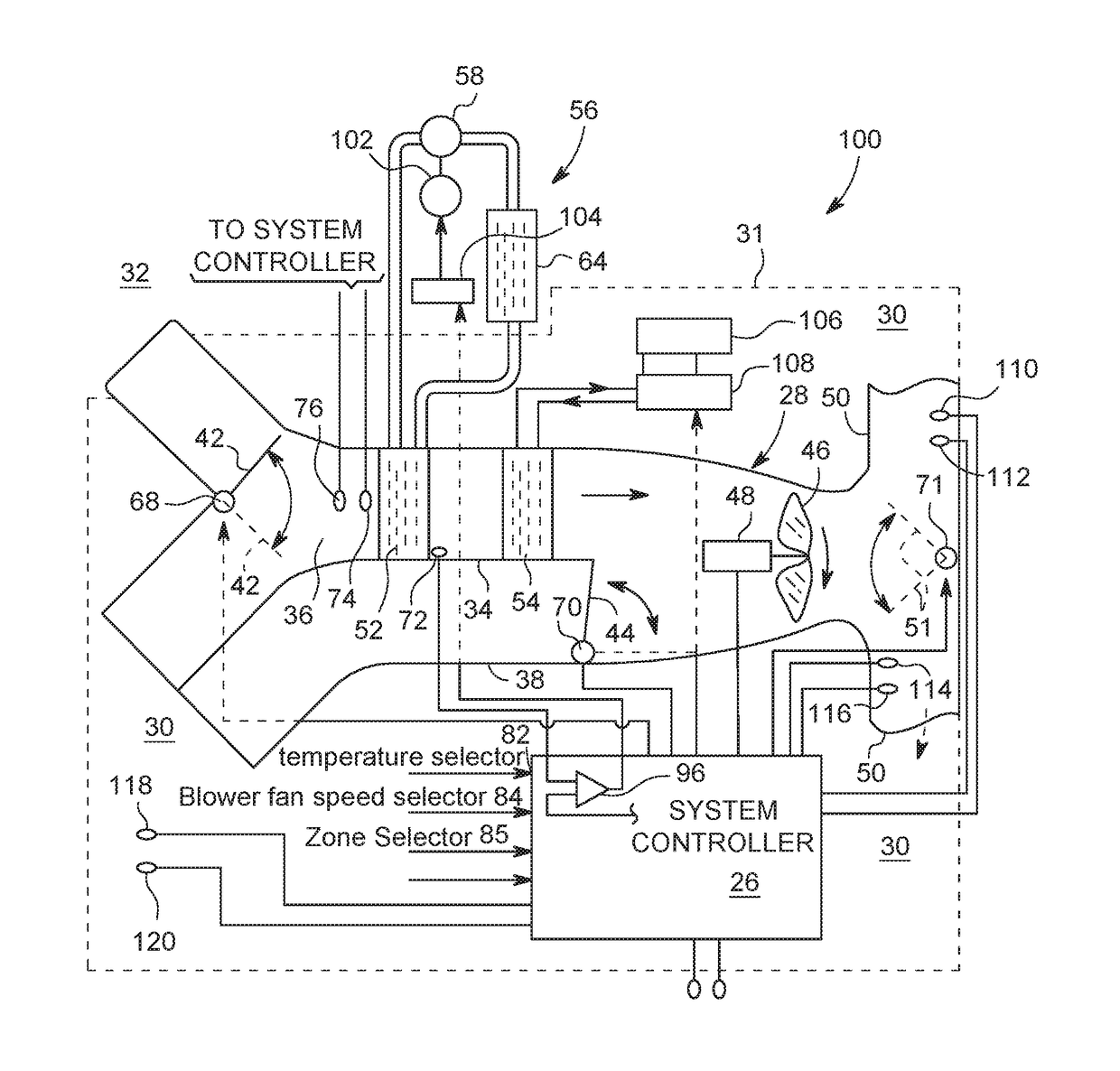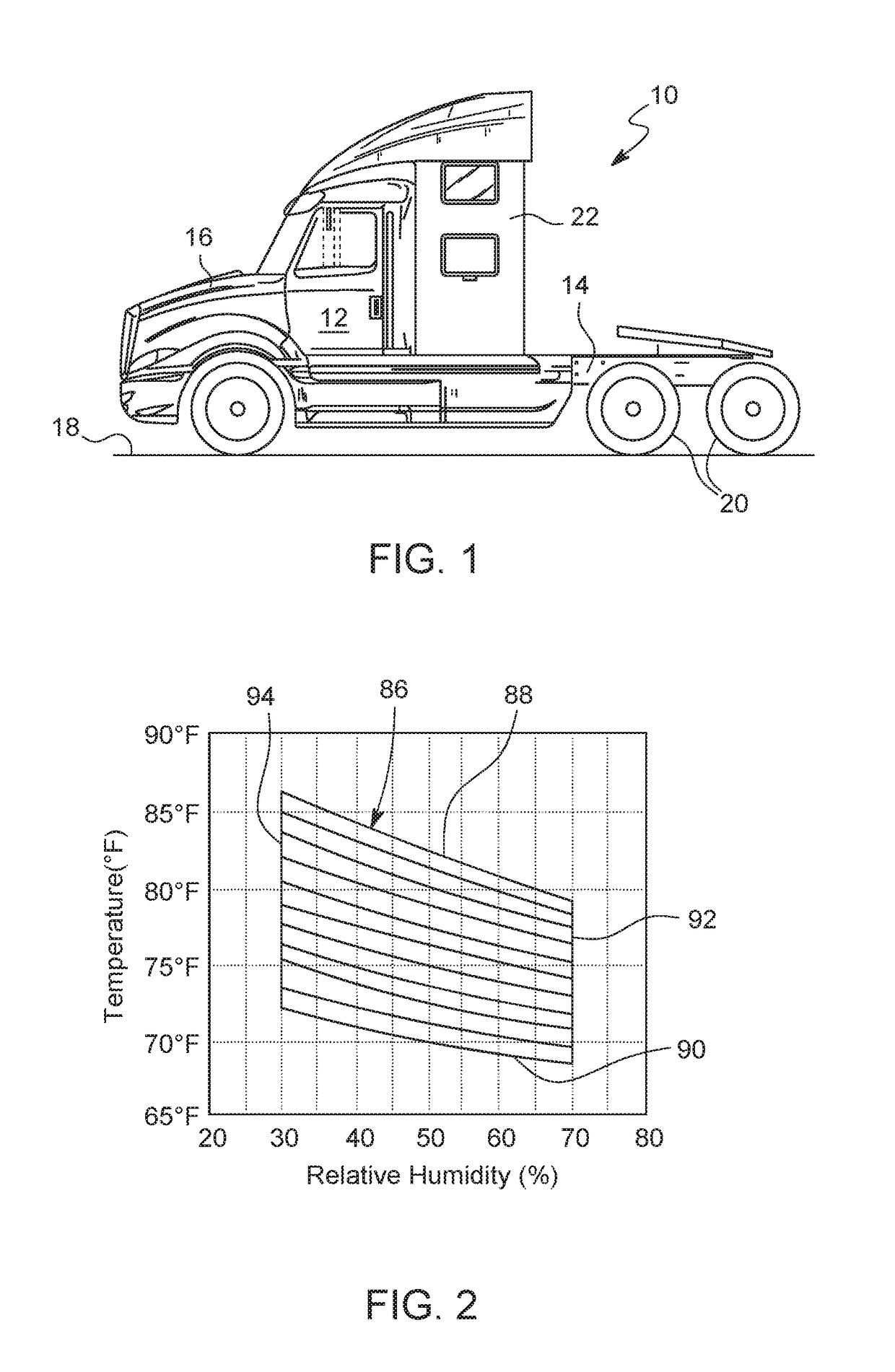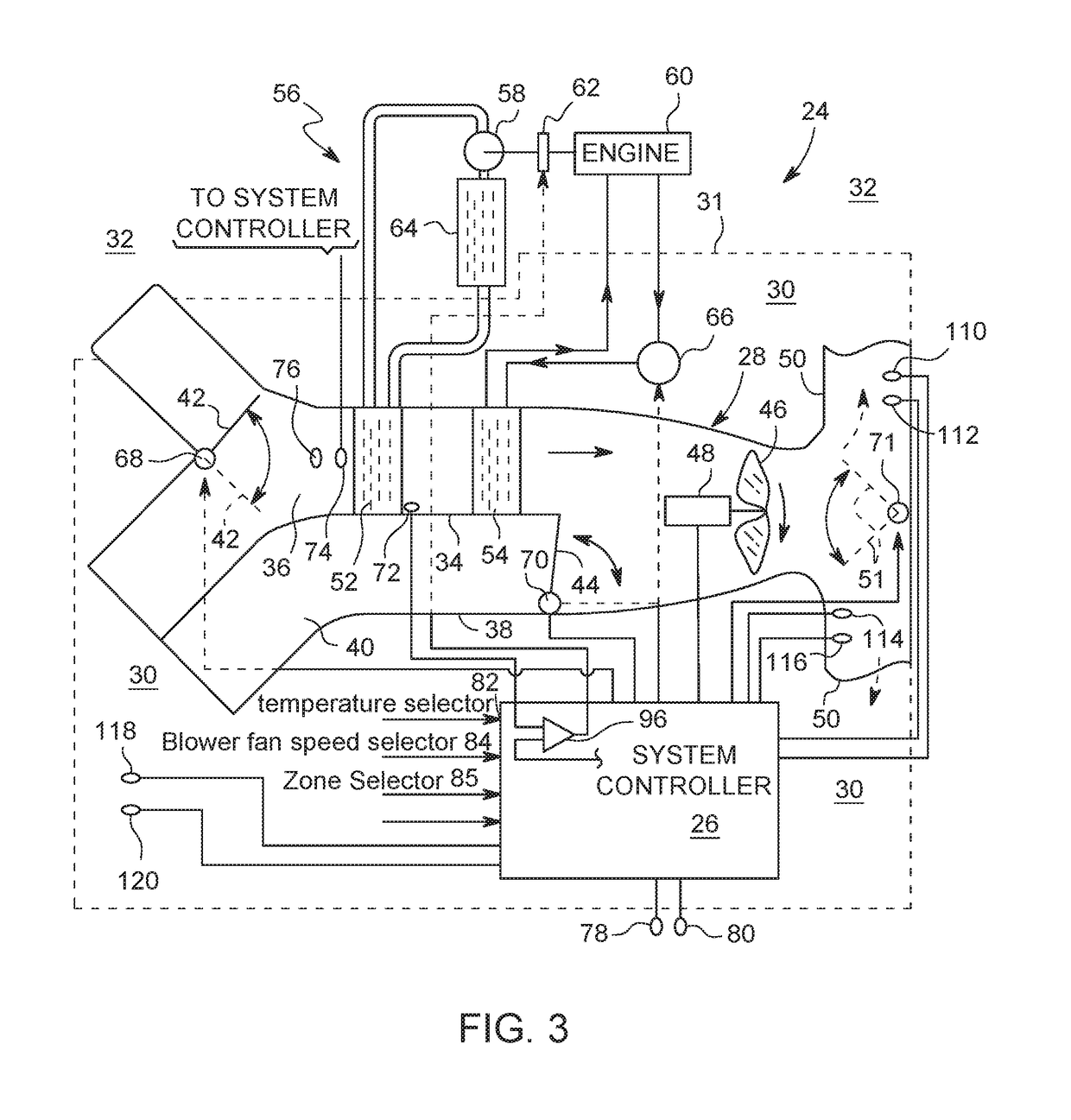Vehicle climate control system
a technology for climate control systems and vehicles, applied in vehicle components, vehicle heating/cooling devices, transportation and packaging, etc., can solve the problems of engine cooling fan operation contributing to inefficient air conditioning operation, significant reduction of overall compressor efficiency, and increased fuel consumption. the effect of basic fuel consumption
- Summary
- Abstract
- Description
- Claims
- Application Information
AI Technical Summary
Benefits of technology
Problems solved by technology
Method used
Image
Examples
example 1
r Initially has 90° F. Temperature and 90% Relative Humidity
[0059]When temperature / relative humidity are beyond either or both boundaries 88, 92 of comfort zone 86, compressor 58 operates to remove thermal energy from air moving across heat exchange surfaces of cooler 52 and thereby decrease both temperature and relative humidity of inside air 30. Inside air is conditioned most quickly if both damper 44 is closed to block flow through secondary airway 38 and damper 42 is positioned to allow inside air 30 to enter airway 34 for recirculation while blocking outside air 32 from entering. Temperature of heat exchange surfaces of cooler 52 is controlled to be slightly less than the dew point temperature of inside air 30 being recirculated through primary airway 34. The magnitude of the difference between temperature of heat exchange surfaces of cooler 52 and dew point temperature of inside air is controlled to be not greater than a defined temperature difference as the temperature of ins...
example 2
r Initially has 85° F. Temperature and 25% Relative Humidity
[0069]This condition often exists in portions of Arizona. The ratio of recirculated inside air 30 to fresh outside air 32 may be made smaller than in Example 1) because a smaller ratio may not have a significant effect on increasing relative humidity of inside air 30, and indeed may be desirable for better freshening (increased oxygen content) of inside air 30 breathed by the driver (and any other occupants) while maintaining occupant compartment temperature and relative humidity within comfort zone 86. Because cooler 52 is both removing moisture from, and also reducing the temperature of, air passing through it, the relative humidity of inside air 30 is also being reduced, and because less moisture needs to be removed from low relative humidity air, a temperature of reduced relative humidity air which needs to be reached in order for inside air 30 to enter comfort zone 86 can be higher than if outside air 32 had higher rel...
PUM
 Login to View More
Login to View More Abstract
Description
Claims
Application Information
 Login to View More
Login to View More - R&D
- Intellectual Property
- Life Sciences
- Materials
- Tech Scout
- Unparalleled Data Quality
- Higher Quality Content
- 60% Fewer Hallucinations
Browse by: Latest US Patents, China's latest patents, Technical Efficacy Thesaurus, Application Domain, Technology Topic, Popular Technical Reports.
© 2025 PatSnap. All rights reserved.Legal|Privacy policy|Modern Slavery Act Transparency Statement|Sitemap|About US| Contact US: help@patsnap.com



